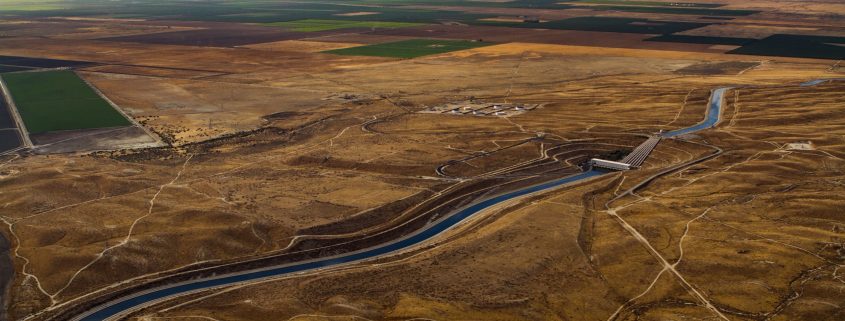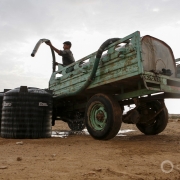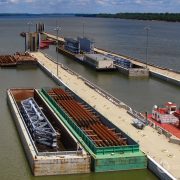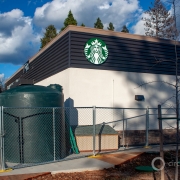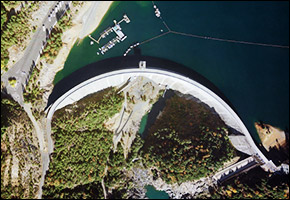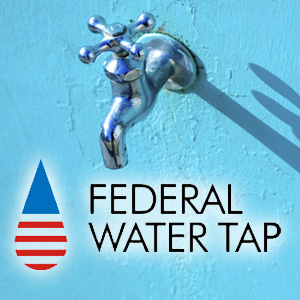California Fresh Groundwater Reserves Triple in New Assessment
Researchers urge caution in underground disposal of oil waste, to protect deep water sources.
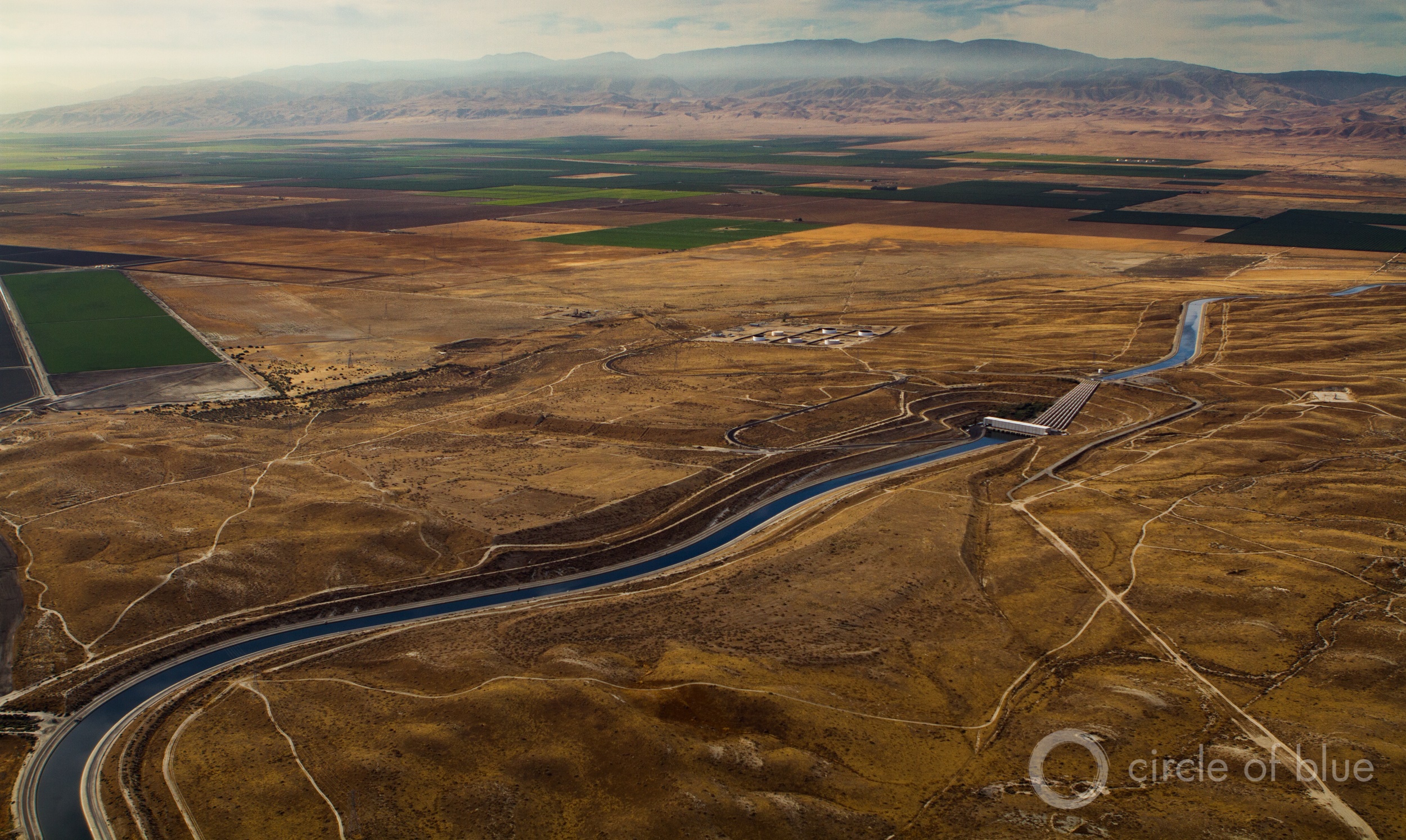
California’s Central Valley is the heart of the state’s farming and oil industries. Stanford researchers found significantly more fresh groundwater beneath the valley the deeper they looked. Photo © J. Carl Ganter / Circle of Blue
By Brett Walton, Circle of Blue
California’s breadbasket has more water than once thought. The water is just far deeper underground — nearly two miles in some cases — than researchers, farmers, and cities typically search.
Only oil and gas companies explore these depths, where hydrocarbons also reside. Stanford University researchers used the industry’s drilling logs, gathered from a state regulatory agency, to estimate the volume and quality of fresh and brackish water beneath eight counties in the Central Valley, a major food producer, and the South Coast, near Los Angeles.
We may need to rely on deep groundwater volumes in the future and so it’s important to characterize the resource and protect it.” — Mary Kang, Stanford University
What they found was surprising. These deeper reserves triple the amount of fresh groundwater present in the counties. Add in the moderately salty sources and the quantity is four times greater than the current estimate, which dates to 1989. The assessment was published online today in the journal Proceedings of the National Academy of Sciences.
Though too deep for current use and saltier than rivers or shallow groundwater, the deep water could be a future source for California, where a terrible drought has called into question the state’s capacity to meet water demands as the planet warms.
To be a viable source, however, the deep water need not be degraded more than it already is. Much less is known about deep groundwater than sources closer to the surface. The researchers warn that the injection of oil waste into aquifers, a common practice in these eight counties, ought to be governed with more caution and subjected to more frequent monitoring.
“We may need to rely on deep groundwater volumes in the future and so it’s important to characterize the resource and protect it,” Mary Kang, a study author, told Circle of Blue.
An Ace Deep in the Hole
The Stanford study revises an outdated estimate. A 1989 analysis by the U.S. Geological Survey that is still used as a baseline looked at fresh water in the Central Valley only to a depth of 305 meters (1,000 feet). By accessing the oil industry well logs, the Stanford researchers were able to assess water volumes up to 3,000 meters (9,840 feet).
Salinity generally increases with depth, Kang said, so the researchers were surprised to find so much high-quality water that far below ground.
They looked at two levels of quality, which is measured in total dissolved solids (TDS), or the amount of salts and minerals in the water. California defines water less than 3,000 parts per million TDS as fresh water, and the U.S. Environmental Protection Agency considers water less than 10,000 parts per million to be a potential drinking water source. Three-quarters of the higher-quality water was found in the first 1,000 meters (3,280 feet) of earth.
William Alley, director of science and technology at the National Ground Water Association, called the study “useful” but noted that more analysis will be necessary to determine how much of the resource is usable. Pumping from such depths might be too expensive, it might eventually draw water away from streams, or it might cause the land surface to settle, a process called subsidence.
“The amount of usable groundwater is usually driven more by these latter problems than by the total volume of the resource,” Alley told Circle of Blue.
An economic analysis of deep groundwater is something that the research team is considering for a future study, Kang said.
Once at the surface, even the moderately salty water can be turned fresh. Desalinating water with 7,000 parts per million of dissolved salts requires one-half to two-thirds the energy as removing the salt from seawater. A groundwater desalination facility already operates in Chula Vista, California. Deeper sources may need additional treatment for boron, radium, or other natural contaminants.
Oil Disposal Regulation
Deep groundwater is vulnerable to pollution not only because of natural elements but also because of oil production. The industry uses aquifers as garbage cans, injecting the salty, chemical-laced water deep underground. These actions are permitted through the U.S. Environmental Protection Agency’s underground injection control program, which California administers within its borders. Since July 2014, however, state regulators have been under federal pressure to rein in a program that permitted the injection of waste into protected aquifers.
The California Department of Conservation’s Division of Oil, Gas, and Geothermal Resources has since shut down 56 injection wells. Ninety more are being evaluated and could also be shuttered, according to the Department of Conservation.
That’s not all. The data from the well logs showed that oil and gas drilling, waste disposal, or steaming of viscous oil to make it flow easier occurred in zones where the water quality was better than the EPA standard for potential drinking water, which is 10,000 parts per million TDS. The practice was most common in Kern County, center of the state’s oil industry. Between 19 and 35 percent of oil production activities in Kern occurred in these geologic layers.
Kang and her co-author Robert Jackson, an expert on hydraulic fracturing and water pollution, argue that regulators need to keep a sharper eye on what is going on below ground. But today regulators are relatively blind. Because deep groundwater is rarely tested, they do not have the data to track changes in groundwater quality.
“Showing direct impact to groundwater resources deeper than [approximately] 100 meters is rarely possible in California or elsewhere, because little or no monitoring is done below the depth of typical domestic water wells,” the study concludes.
Brett writes about agriculture, energy, infrastructure, and the politics and economics of water in the United States. He also writes the Federal Water Tap, Circle of Blue’s weekly digest of U.S. government water news. He is the winner of two Society of Environmental Journalists reporting awards, one of the top honors in American environmental journalism: first place for explanatory reporting for a series on septic system pollution in the United States(2016) and third place for beat reporting in a small market (2014). He received the Sierra Club’s Distinguished Service Award in 2018. Brett lives in Seattle, where he hikes the mountains and bakes pies. Contact Brett Walton

